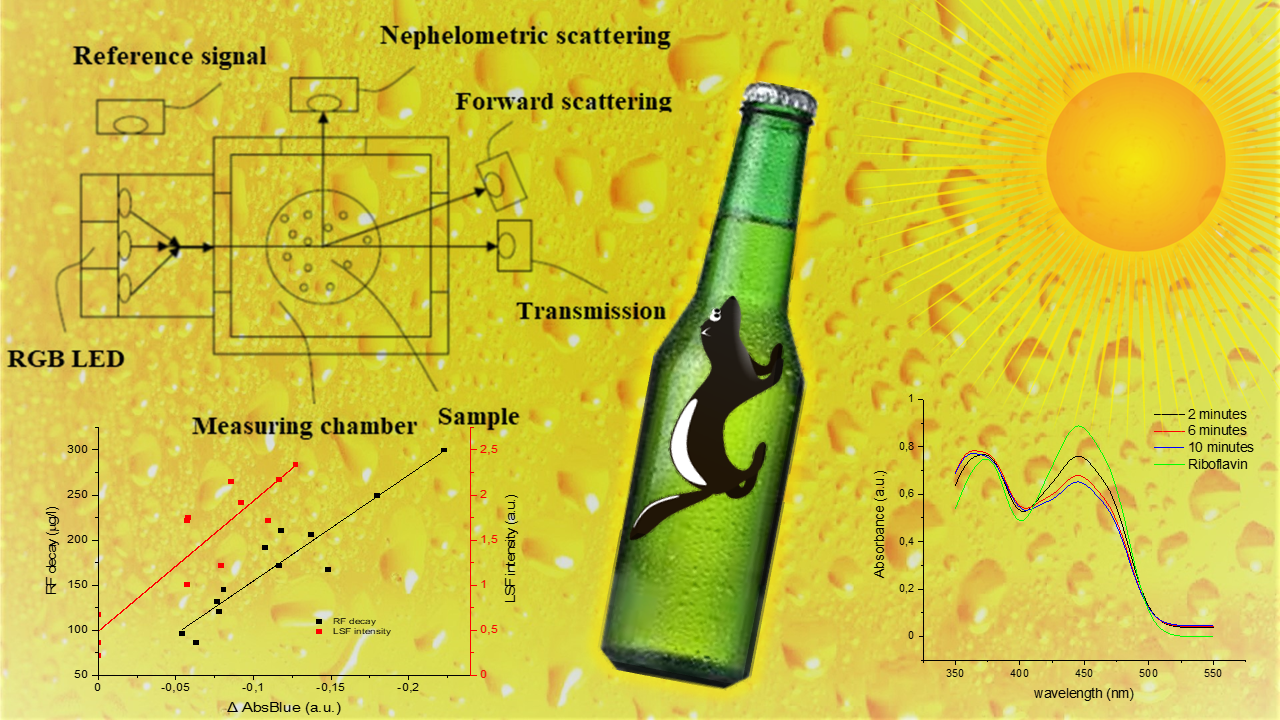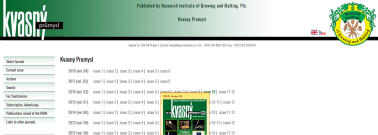Direct detection of beer photodegradation in commercial bottles and introduction of a new Light-Struck Flavour Susceptibility Index
DOI:
https://doi.org/10.18832/kp2022.68.656Keywords:
beer, light-struck flavour, photodegradation, 3-methyl-2-butene-1-thiol, riboflavinAbstract
Exposure of beer to light results in the formation of undesirable flavours or complete spoilage. Photo-damaged beer
has a specific, so-called skunky or light-struck flavour (LSF). The compound responsible for LSF is 3-methylbut-2-
ene-1-thiol (MBT). Riboflavin (RF) plays a key role in the formation of MBT. It absorbs light in the blue part of the
spectrum and transfers excitation energy to isohumulones. This process is accompanied by the decomposition of RF,
which causes a decrease in the absorbance of the sample at 450 nm. The decomposition is directly related to the
formation of LSF. In this study, the decrease in absorbance associated with the defined illumination of model and real
beer directly in commercial bottles was measured. The decrease in absorbance correlated with the decrease in RF
concentration and the formation of LSF detected by the sensory panel. The Light-Struck Flavour Susceptibility Index
was introduced as a rate of the beer susceptibility to light degradation and the formation of LSF.
References
De Keukeleire, D., Heyerick, A., Huvaere, K., Skibsted, L. H., Andersen, M. L. (2008). Beer lightstruck flavor: The full story. Cerevisia, 33, 133–144.
Gabriel, P., Sigler, K. (2018). A device monitoring turbidity and color changes of beverages directly in bottled samples. Kvasny prumysl, 64(5), 224–232. https://doi.org/10.18832/kp201831
Heyerick, A. (2001). Unraveling the mechanism of the lightstruck flavor of beer. Retrieved from http://hdl.handle.net/1854/LU-530875
Hucker, B., Wakeling, L., Vriesekoop, F. (2011). The quantitative analysis of thiamin and riboflavin and their respective vitamers in fermented alcoholic beverages. Journal of Agricultural and Food Chemistry, 59(23), 12278–12285. https://doi.org/10.1021/jf202647x
Irwin, A. J., Bordeleau, L., Barker, R. L. (1993). Model studies and flavor threshold determination of 3-methyl-2-butene-1-thiol in beer. Journal of the American Society of Brewing Chemists, 51(1), 1–3. https://doi.org/10.1094/ASBCJ-51-0001
Lintner, C. (1875). In Lehrbuch der Bierbrauerei (p. 343). Braunschweig, Germany: Verlag Vieweg und Sohn.
Pozdrik, R., Roddick, F., Rogers, P., Nguyen, T. (2006). Spectrophotometric method for exploring 3-methyl-2-butene-1-thiol (MBT) formation in lager. Journal of Agricultural and Food Chemistry, 54(17), 6123–6129. https://doi.org/10.1021/jf060515v
Sakuma, S., Rikimaru, Y., Kobayashi, K., Kowaka, M. (1991). Sunstruck flavor formation in beer. Journal of the American Society of Brewing Chemists, 49(4), 162–165. https://doi.org/10.1094/ASBCJ-49-0162
Templar, J., Arrigan, K., Simpson, W. J. (1995). Formation, measurement and significance of lightstruck flavor in beer: A review. Brewer’s Digest, 70, 18–25.

Downloads
Published
How to Cite
Issue
Section
License
Copyright (c) 2022 Petr Gabriel, Jakub Škoda, Karolína Benešová, Dagmar Matoulková

This work is licensed under a Creative Commons Attribution 4.0 International License.







